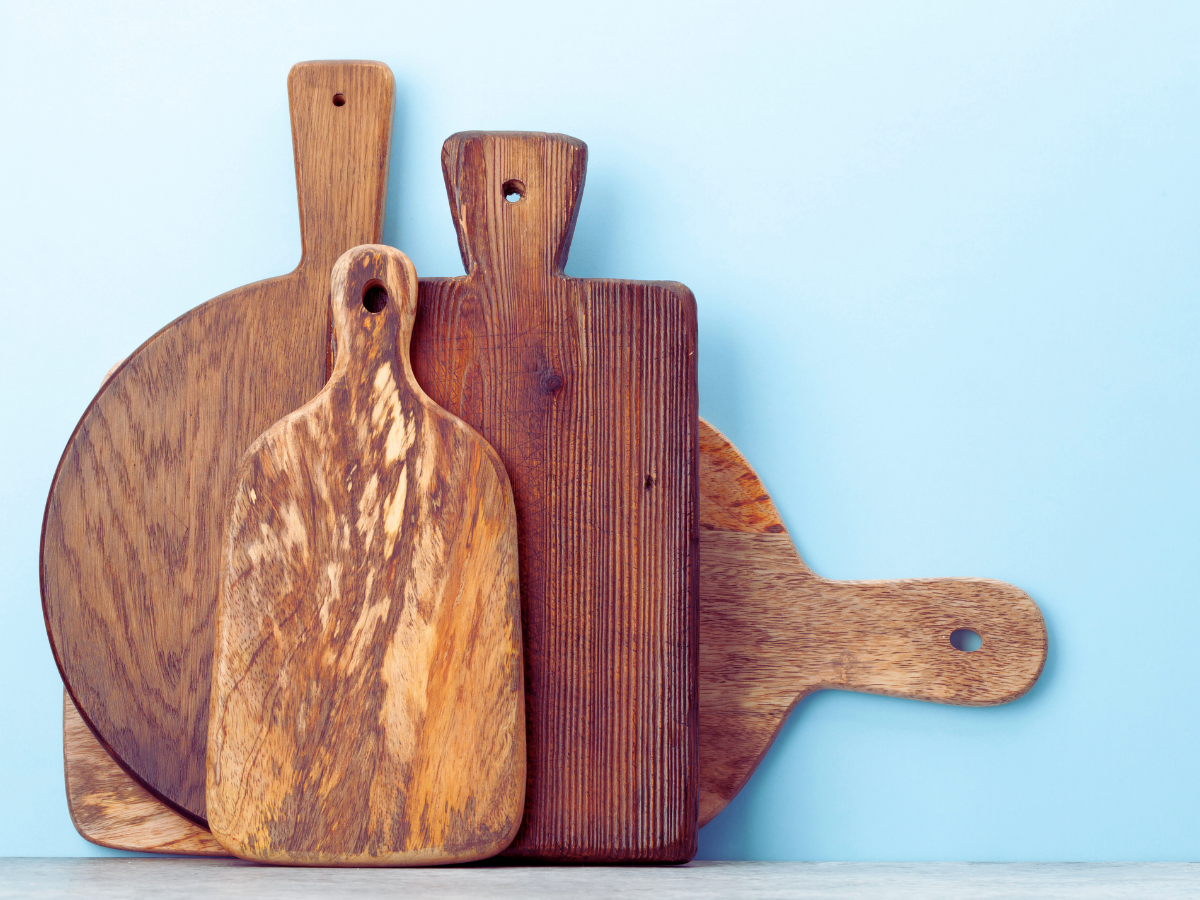
Cutting boards are an essential kitchen tool used in daily food preparation, whether slicing vegetables, cutting raw meat, or chopping herbs. However, while they may seem harmless, the type of cutting board you use, whether plastic or wooden, can present serious health risks if not carefully and properly maintained. From harboring bacteria to contributing to cross-contamination, the dangers of using plastic or wooden cutting boards can significantly impact your kitchen’s hygiene and your family’s health.
What Are the Dangers of Plastic and Wooden Cutting Boards?
Cutting boards are often exposed to raw meats, fruits, and vegetables, making them highly susceptible to bacteria and foodborne pathogens. Whether using a plastic or wooden board, these surfaces can develop deep cuts and grooves over time, providing a perfect environment for bacteria to thrive. Let’s break down the specific risks associated with each type of cutting board:
1. Dangers of Plastic Cutting Boards
Plastic cutting boards are popular because they are lightweight, affordable, and easy to clean. However, they come with some hidden dangers:
- Microplastics and Toxins: Over time, plastic cutting boards can release tiny plastic particles known as microplastics into your food. These microplastics can have detrimental effects on health, potentially leading to digestive issues and even long-term diseases like cancer. Additionally, many plastic boards contain chemicals such as BPA (bisphenol A), which is known to disrupt hormones and negatively impact the endocrine system.
- Deep Cuts and Grooves: As you use a plastic cutting board, knives leave deep cuts on the surface. These grooves can trap bacteria, making it difficult to clean the board thoroughly. Even though plastic boards are often dishwasher-safe, the bacteria trapped in these cuts can still survive, increasing the risk of cross-contamination when preparing food.
- Bacterial Growth: The smooth surface of a plastic board may seem easy to sanitize, but once cuts appear, bacteria like E. coli and Salmonella can thrive in the crevices. This is especially concerning when the same board is used for cutting both raw meat and vegetables, which can lead to dangerous cross-contamination.
2. Dangers of Wooden Cutting Boards
Wooden cutting boards have long been favored for their durability and aesthetic appeal, but they also come with certain risks:
- Absorption of Liquids: Wood is porous, meaning it can absorb moisture from foods, including juices from raw meat. This absorption creates an ideal breeding ground for bacteria. If the board isn’t dried thoroughly after each use, it can harbor moisture, leading to mold growth and bacterial contamination.
- Bacteria in Deep Grooves: Like plastic cutting boards, wooden boards are prone to cuts and grooves from knives. These grooves can trap food particles and bacteria, making the board difficult to clean effectively. Over time, the bacteria can multiply, increasing the risk of contamination.
- Difficult to Sanitize: While wood is a more natural material, it is also more difficult to sanitize. Most wooden boards can’t be placed in a dishwasher, and simply wiping them down with water may not be enough to remove bacteria lodged in the pores of the wood. Even with proper cleaning, it’s nearly impossible to fully disinfect a heavily used wooden board.
Where Do These Risks Arise?
The risks associated with plastic and wooden cutting boards can arise in several areas of your kitchen, particularly when preparing raw meat, fruits, vegetables, and other foods that come into contact with the board. Here are a few common scenarios where cutting board safety becomes a concern:
1. Cross-Contamination
Cross-contamination occurs when harmful bacteria from raw meat or poultry transfer to other foods like vegetables, fruits, or bread through a shared cutting board. This can happen when you use the same board without washing it thoroughly between tasks. Since plastic and wooden boards can both trap bacteria in their grooves, the risk of cross-contamination is especially high.
2. Improper Cleaning
Many people underestimate the importance of thoroughly cleaning their cutting boards. Simply rinsing a board with water after use is not enough to remove bacteria and food particles from deep grooves or pores. Both plastic and wooden boards require more intensive cleaning to ensure that harmful pathogens are eliminated.
3. Storing a Damp Cutting Board
Improper storage is another risk area. If a wooden cutting board is stored while it’s still damp, it can lead to mold growth or increase bacterial presence. Similarly, plastic boards left in humid environments can harbor bacteria.
4. Knife Damage
Both plastic and wooden boards are prone to knife damage, creating deep cuts and grooves over time. As these grooves deepen, they trap more bacteria, making it difficult to clean the board adequately. This presents a significant health hazard, especially if you are frequently using the board to prepare raw meat.
When Should You Replace Your Cutting Board?
Knowing when to replace your cutting board is key to maintaining kitchen hygiene. Here are some indicators that it’s time to invest in a new board:
1. Deep Grooves or Cracks
If your cutting board has developed deep grooves or cracks, it’s time to replace it. These imperfections trap bacteria and food particles, making it impossible to sanitize the board effectively.
2. Discoloration or Stains
Persistent stains, especially from raw meat, fruits, or vegetables, are a sign that your cutting board has absorbed too much moisture or food residue. This can lead to bacterial growth and compromise food safety.
3. Foul Odor
If your cutting board smells even after being cleaned, this is a sign that bacteria or mold may be trapped in the material. Wooden boards, in particular, can absorb strong odors that indicate deeper contamination.
4. Warping
Wooden boards can warp over time, especially if they aren’t dried properly. Warping makes it difficult to chop food evenly and can also create uneven surfaces where bacteria can accumulate.
Replacing your cutting board regularly is one of the easiest ways to prevent bacterial contamination and maintain a hygienic cooking environment. While it may be tempting to hold onto a board that shows wear and tear, your health and safety should come first.
Why Cutting Board Safety Is Essential
The risks associated with plastic and wooden cutting boards go beyond minor inconveniences—these risks can have serious consequences for your health. Here’s why cutting board safety should be a top priority in your kitchen:
1. Prevention of Foodborne Illness
Foodborne illnesses caused by bacteria such as Salmonella, E. coli, and Listeria can be serious, especially when these bacteria spread through cross-contamination. Using a cutting board that harbors bacteria increases the risk of contaminating your food and potentially causing illness.
2. Improved Kitchen Hygiene
A clean kitchen starts with the basics, and your cutting board is one of the most important tools for maintaining hygiene. By regularly replacing old or damaged cutting boards and properly cleaning them after each use, you can significantly reduce the risk of foodborne contamination.
3. Peace of Mind
Knowing that your cutting board is clean and free of bacteria allows you to cook with confidence. Proper cutting board maintenance provides peace of mind, allowing you to focus on preparing healthy, delicious meals for yourself and your family without worrying about contamination.
Trending : Bamboo Cutting Board Set by Royal Craft Wood
To ensure that your kitchen stays safe and hygienic, consider switching to a Bamboo Cutting Board Set by Royal Craft Wood. Bamboo is a highly sustainable and eco-friendly material that is naturally resistant to bacteria. Bamboo cutting boards are durable and non-porous, making them less likely to absorb moisture and trap bacteria compared to traditional wooden boards. Plus, bamboo is a much safer alternative to plastic boards as it doesn’t release harmful chemicals or microplastics into your food.
Key Benefits:
- Naturally Antimicrobial: Bamboo is known for its natural antimicrobial properties, reducing the likelihood of bacterial growth on the surface.
- Durable and Sustainable: Bamboo is a renewable resource that grows quickly, making it an eco-friendly choice for your kitchen.
- Non-Porous Surface: Bamboo cutting boards are less likely to absorb liquids or harbor bacteria, ensuring a cleaner and safer surface for food preparation.
Usage: Use the Bamboo Cutting Board Set for chopping vegetables, fruits, meats, and more. After each use, hand wash with soap and water, and dry thoroughly to maintain its longevity and prevent warping.
Cutting boards are one of the most frequently used tools in any kitchen, but they also pose hidden dangers if not chosen and maintained carefully. Both plastic and wooden cutting boards can harbor bacteria, increase the risk of cross-contamination, and even release harmful substances into your food over time. By understanding the risks associated with each type of board and taking steps to maintain a clean and hygienic kitchen environment, you can significantly reduce the risk of foodborne illness.
At CarnivoreDaddy.com, we emphasize the importance of food safety and hygiene as part of a healthy, sustainable lifestyle. Investing in a high-quality bamboo cutting board, such as the Bamboo Cutting Board Set by Royal Craft Wood, can provide peace of mind, knowing that your kitchen tools are safe, durable, and environmentally friendly. Prioritizing cutting board safety is a small change that can make a big difference in the long-term health and well-being of you and your family.
Subscribe to our newsletter!
In the Spotlight

Carnivore Cure is the first elimination protocol to explain how to adopt a meat-based diet to bring about healing.
READ MORE
